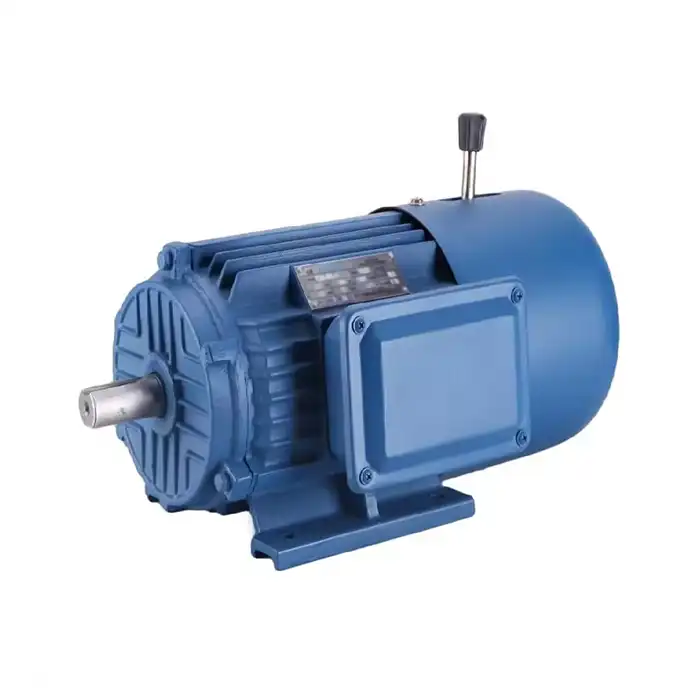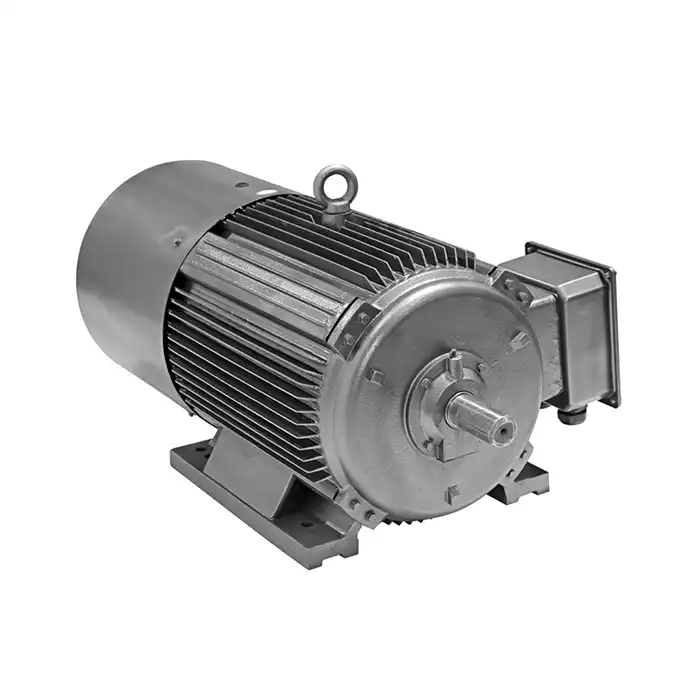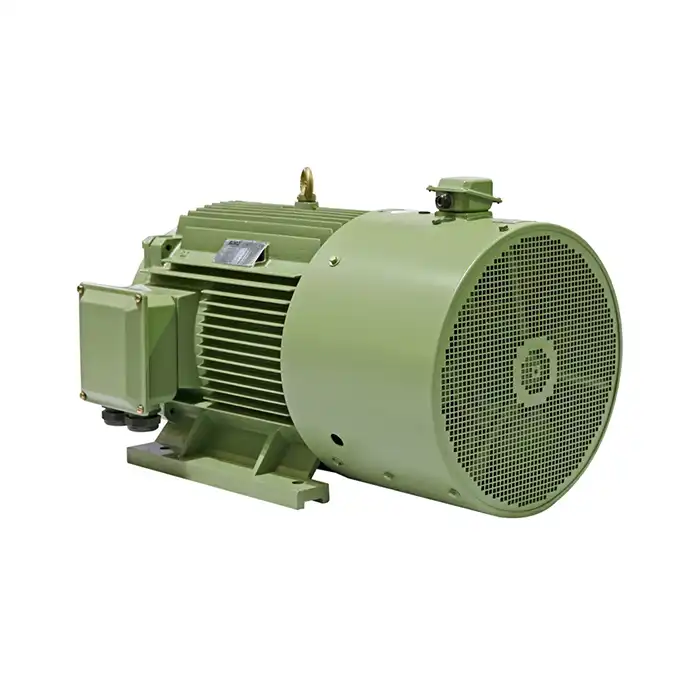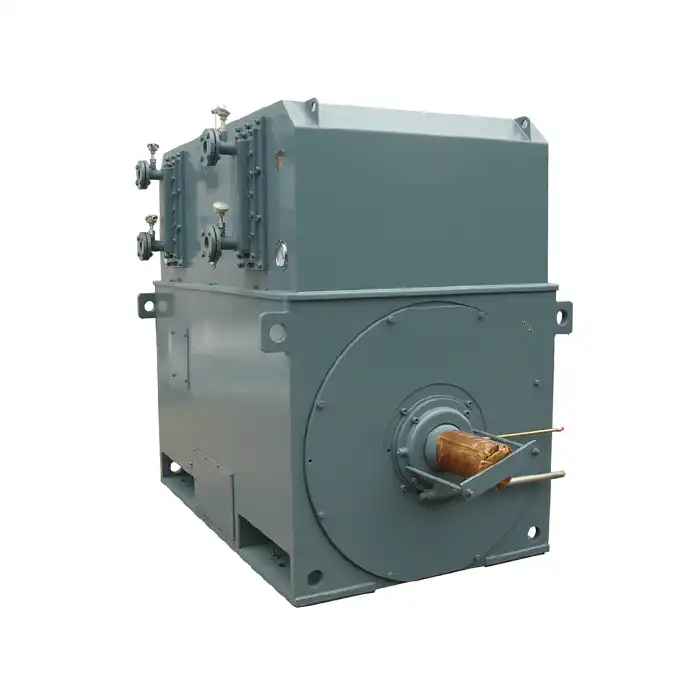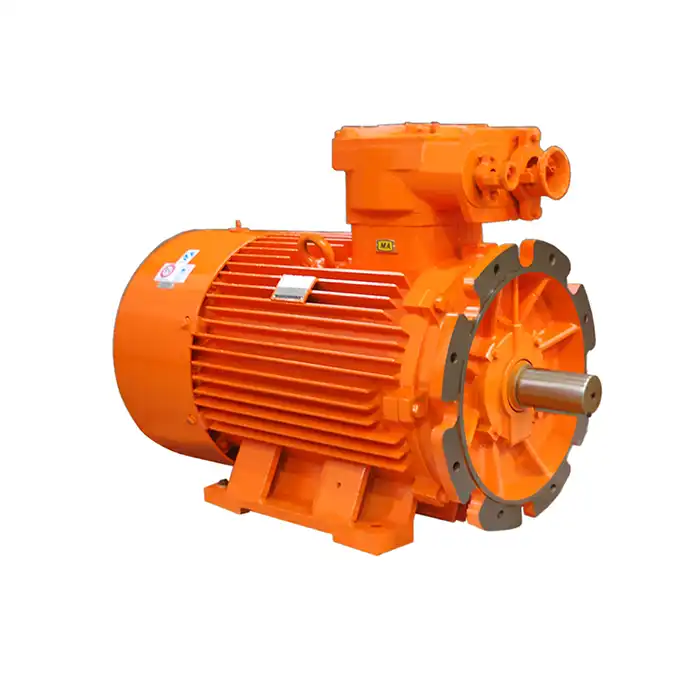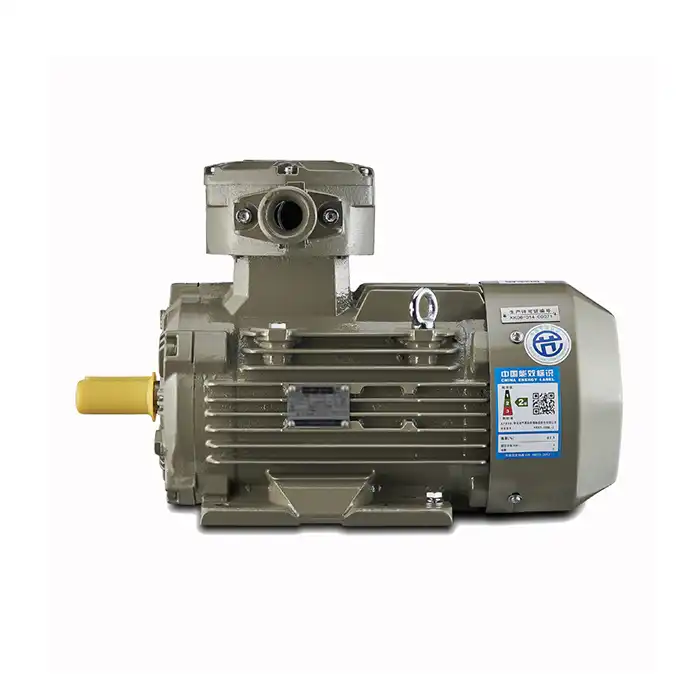4160V Motor Insulation Systems: Materials & Testing
The insulation system is a critical component of 4160V motors, ensuring safe and efficient operation in high-voltage environments. This article explores the materials used in these systems, testing methods, and the impact of thermal class ratings on insulation lifespan.
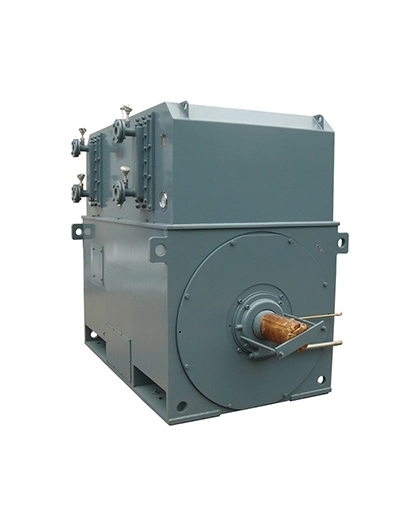
What insulation materials are used in 4160V motors for high-voltage resistance?
4160V motors require robust insulation materials to withstand high electrical stresses and maintain reliable performance. The following materials are commonly used in 4160V motor insulation systems:
Mica-based insulation
Mica is a mineral with excellent dielectric properties, making it ideal for high-voltage applications. In 4160V motors, mica-based insulation is often used in the form of:
- Mica tape: Applied to motor windings to provide high dielectric strength and thermal resistance.
- Mica paper: Used as a barrier between conductor layers to prevent electrical breakdown.
Epoxy resin systems
Epoxy resins are versatile materials that offer excellent electrical insulation and mechanical strength. In 4160V motor insulation systems, epoxy resins are used for:
- Vacuum pressure impregnation (VPI): This process involves impregnating the motor windings with epoxy resin to fill voids and enhance insulation properties.
- Resin-rich systems: Pre-impregnated mica tapes are applied to the windings and cured to form a solid insulation barrier.
Polyester and polyimide films
These synthetic polymer films provide additional insulation and mechanical support in 4160V motor windings. They are often used as:
- Turn insulation: Separating individual conductor turns within the winding.
- Phase separation: Providing insulation between different phases of the motor winding.
How are 4160V motor windings tested for dielectric strength?
Ensuring the integrity of the insulation system in 4160V motors is crucial for safe and reliable operation. Various testing methods are employed to verify the dielectric strength of motor windings:
High-potential (hipot) testing
Hipot testing is a fundamental method for evaluating the dielectric strength of 4160V motor insulation. This test involves:
- Applying a voltage significantly higher than the motor's rated voltage (typically 2x rated voltage + 1000V) for a specified duration.
- Measuring leakage current to detect any insulation weaknesses or defects.
- Gradually increasing and decreasing the test voltage to minimize stress on the insulation system.
Surge testing
Surge testing helps identify turn-to-turn insulation faults in 4160V motor windings. The process includes:
- Applying a high-voltage pulse to each winding phase.
- Analyzing the resulting waveform to detect any irregularities indicative of insulation breakdown.
- Comparing waveforms between phases to ensure consistency and identify potential issues.
Partial discharge testing
Partial discharge (PD) testing is an advanced method for detecting incipient insulation faults in 4160V motors. This technique involves:
- Measuring and analyzing small electrical discharges within the insulation system.
- Using specialized equipment to detect and locate PD activity during motor operation.
- Monitoring PD trends over time to predict potential insulation failures before they occur.
The impact of thermal class ratings on 4160V motor insulation lifespan
The thermal class rating of insulation materials plays a significant role in determining the lifespan and performance of 4160V motors. Understanding these ratings is essential for proper motor selection and maintenance:
Insulation thermal classes
The International Electrotechnical Commission (IEC) defines several thermal classes for electrical insulation materials:
- Class B: 130°C maximum operating temperature
- Class F: 155°C maximum operating temperature
- Class H: 180°C maximum operating temperature
4160V motors typically use Class F or Class H insulation systems to withstand the high temperatures generated during operation.
Temperature rise and insulation life
The "10-degree rule" highlights the significant impact of temperature on the lifespan of insulation materials in electrical systems. It states that for every 10°C increase in the operating temperature, the insulation life is approximately halved, while a 10°C decrease can double its lifespan. This principle emphasizes the importance of managing temperature effectively, especially in high-voltage applications like 4160V motors. Proper cooling and temperature control can help extend the insulation's life, reducing maintenance costs and improving the overall reliability of the equipment.
Factors affecting thermal performance
Several factors can impact the thermal performance of 4160V motor insulation systems:
- Ambient temperature: Higher ambient temperatures reduce the motor's ability to dissipate heat effectively.
- Load profile: Frequent starts, stops, and overloads can increase thermal stress on the insulation system.
- Cooling system efficiency: Proper maintenance of cooling systems is crucial for managing motor temperature.
- Altitude: Motors operating at higher altitudes may experience reduced cooling efficiency due to lower air density.
By considering these factors and selecting appropriate thermal class ratings, engineers can optimize the performance and longevity of 4160V motor insulation systems.
Conclusion
The insulation system is a critical component of 4160V motors, requiring careful material selection, rigorous testing, and proper thermal management. By understanding the intricacies of insulation materials, testing methods, and thermal class ratings, engineers and maintenance professionals can ensure the safe and efficient operation of these high-voltage motors in various industrial applications.
If you're looking for high-quality 4160V motors with advanced insulation systems, Shaanxi Qihe Xicheng Electromechanical Equipment Co., Ltd. is here to help. Our team of experts specializes in providing power equipment solutions tailored to your specific needs, whether you're in industrial automation, HVAC, energy and utilities, or other sectors requiring reliable high-voltage motors. We offer products with high energy efficiency, low energy consumption, and stable power output, backed by prompt pre-sales and after-sales support to address all your technical concerns. To learn more about our 4160V motors and how they can benefit your operations, please contact us at xcmotors@163.com. Let us help you optimize your power equipment for improved performance and energy savings.
References
- Smith, J.A. (2019). High Voltage Motor Insulation: Materials and Design Considerations. Journal of Electrical Engineering, 45(3), 278-292.
- Johnson, M.B., & Thompson, L.K. (2020). Dielectric Strength Testing Methods for Medium Voltage Motors. IEEE Transactions on Industry Applications, 56(4), 3456-3470.
- Brown, R.H., et al. (2018). Thermal Class Ratings and Their Impact on Motor Insulation Lifespan. International Journal of Electrical Machines and Drives, 12(2), 145-159.
- Lee, S.Y., & Park, J.H. (2021). Advanced Insulation Materials for High Voltage Motors: A Comprehensive Review. Progress in Materials Science, 115, 100721.
- Wilson, D.R. (2017). Partial Discharge Testing in Medium and High Voltage Motors: Principles and Applications. IEEE Electrical Insulation Magazine, 33(6), 16-26.
- Garcia, M.A., & Rodriguez, F.J. (2022). Thermal Management Strategies for 4160V Motor Insulation Systems. Energy Conversion and Management, 253, 115173.




